Leo contains five Messier objects. All five are galaxies that lie in the region between the constellation’s brightest stars, Regulus and Denebola. They are:
- Messier 65
- Messier 66
- Messier 95
- Messier 96
- Messier 105
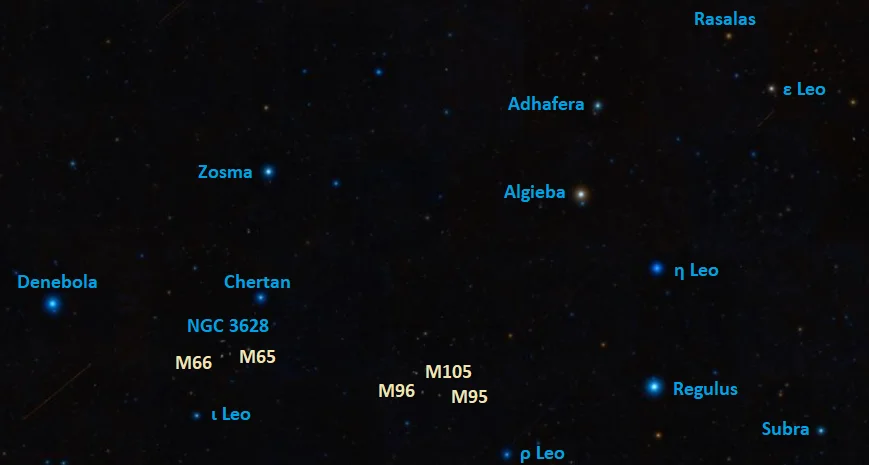
Four of these objects – M65, M66, M95, and M96 – are spiral galaxies, while M105 is an elliptical galaxy. The five galaxies are divided between two groups: the Leo Triplet (the M66 Group) and the Leo I Group (the M96 Group). The two groups may be parts of a larger galaxy group. It has also been suggested that the M66 Group is part of the larger M96 Group.
As the name suggests, the Leo Triplet is a small group consisting of three interacting galaxies: Messier 65, Messier 66 and NGC 3628. The galaxies appear in the same field of view. With apparent magnitudes of 10.25, 8.9, and 10.2, they can be seen in small telescopes, but only appear as patches of light. The galaxies’ spiral arms are visible in 10-inch and larger telescopes.
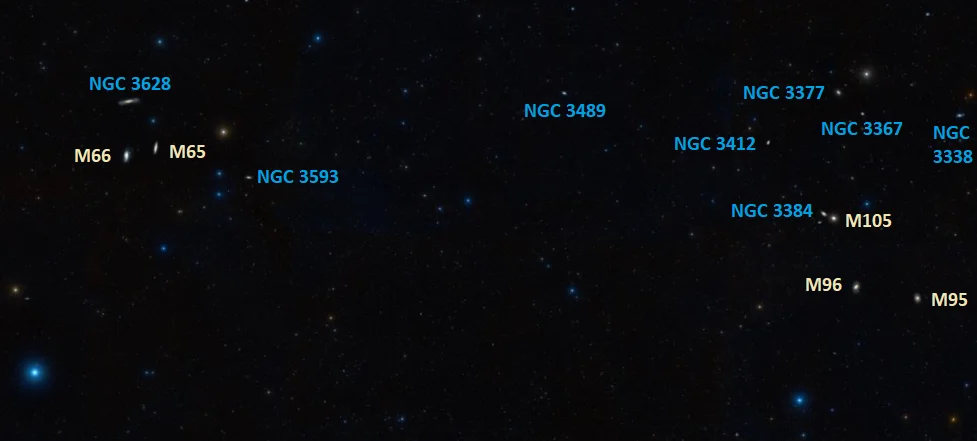
Messier 65 and Messier 66 are intermediate spirals with apparent sizes of 8.709 by 2.454 arcminutes and 9.1 by 4.2 arcminutes. NGC 3628, also known as Sarah’s Galaxy or the Hamburger Galaxy, is the longest of the three, appearing edge-on, with an apparent size of 15 by 3.6 arcminutes. It is classified as an unbarred spiral galaxy, but it has been suggested that it may be a barred spiral with the bar appearing end-on. Messier 65 and NGC 3628 lie approximately 35 million light years away, while Messier 66 is a little closer to us, at 31 million light years.
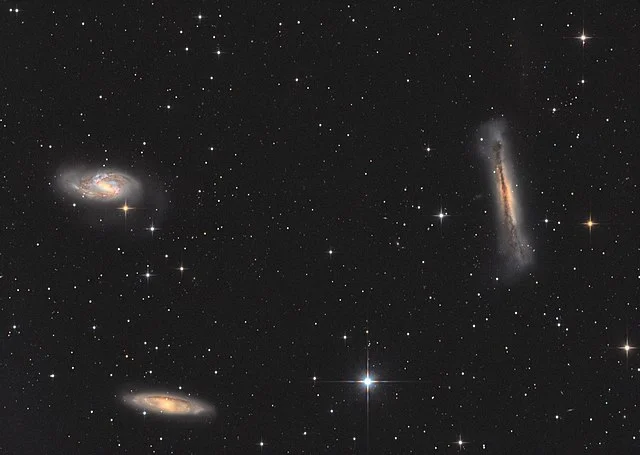
The Leo Triplet is easy to find because it lies at the intersection of the imaginary lines connecting Denebola and Regulus and Chertan (Theta Leonis) and Iota Leonis. Theta and Iota Leonis have apparent magnitudes of 3.324 and 4.00, which makes them visible to the naked eye, but challenging to see from light-polluted areas.
The Leo I Group contains Messier 95, Messier 96, Messier 105 and at least five other members, including NGC 3377, NGC 3384, and NGC 3489. The group lies at a distance of about 37 million light years. It can be found about a third of the way from Regulus to Denebola.
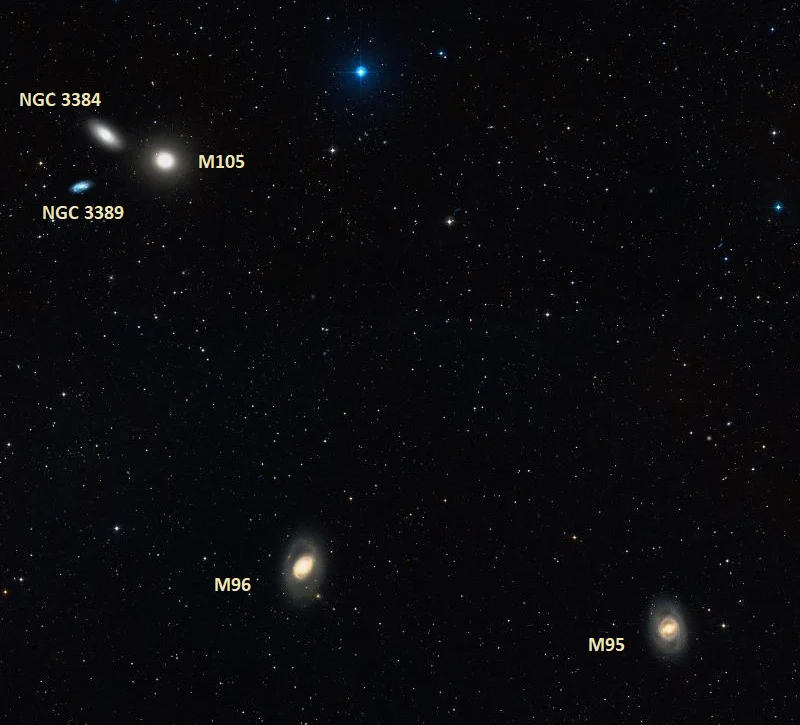
Messier 95 is a barred spiral galaxy with an apparent magnitude of 11.4 and an apparent size of 3.1 by 2.9 arcminutes. It lies 32.6 million light years away.
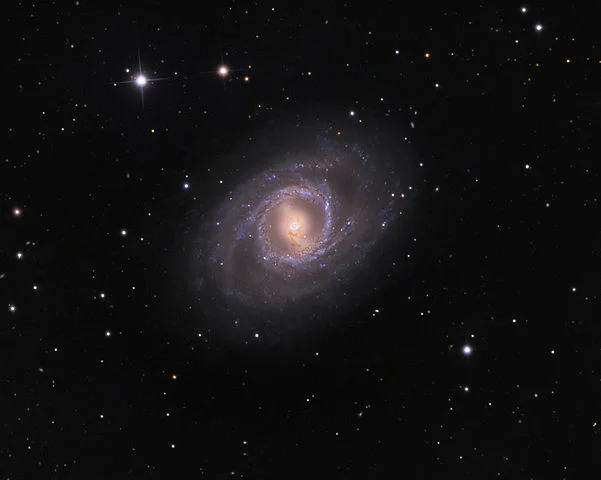
Messier 96 appears brighter and larger, with an apparent magnitude of 10.1 and an apparent size of 7.6 by 5.2 arcminutes. It is also closer to us than M95, at a distance of 31 million light years. It is classified as an intermediate spiral galaxy.
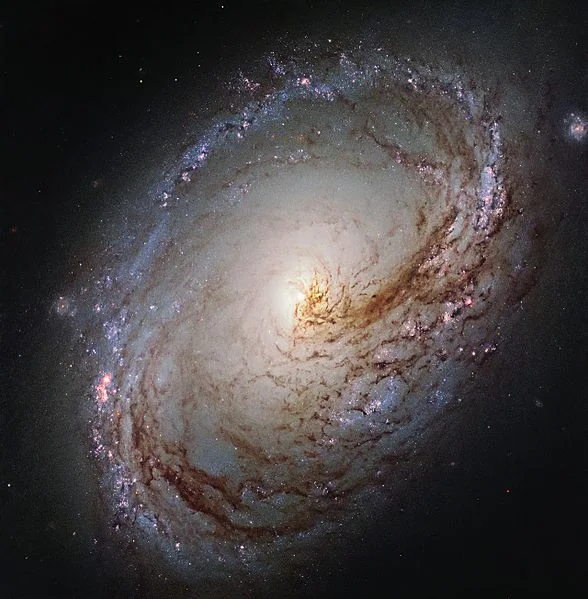
Messier 105 is an elliptical galaxy with an apparent magnitude of 10.2 and an apparent size of 5.4 by 4.8 arcminutes. It lies 36.6 million light years away. Like all elliptical galaxies, M105 appears as a featureless ball of light, even in the largest of telescopes. It is interacting with its elliptical neighbour NGC 3384 and the spiral galaxy NGC 3389. NGC 3384 has an apparent magnitude of 10.9 and NGC 3389 is fainter at magnitude 11.80. The three galaxies can be seen in the same field of view of a 10-inch telescope.
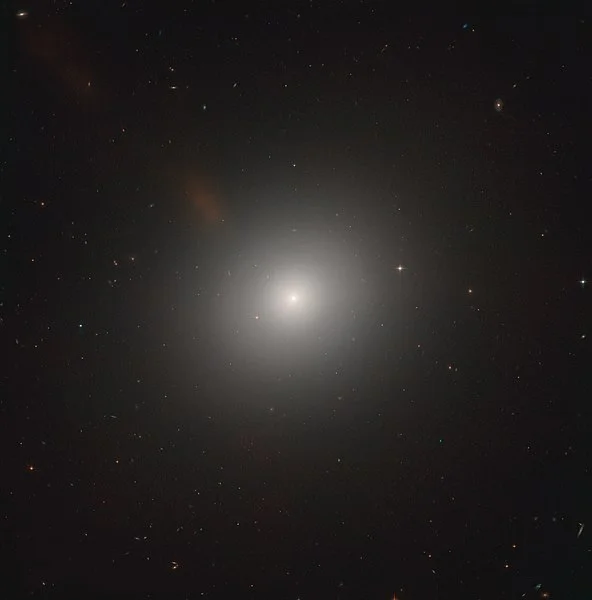
The best time of year to observe the deep sky objects in Leo is during the month of April, when the constellation rises high in the evening sky.